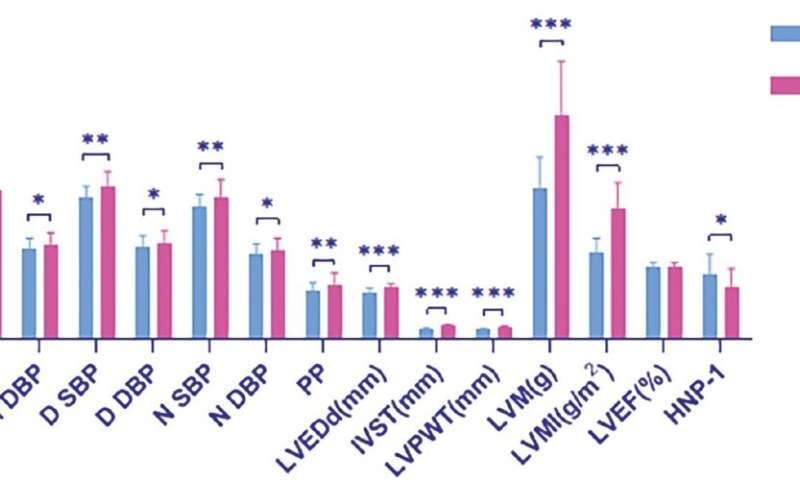HNP-1 reverses hypertensive left ventricular hypertrophy by inhibiting the NF-кB signaling pathway

Human neutrophil peptide-1 (HNP-1) is a commonly investigated therapeutic agent. However, its role in hypertensive left ventricular hypertrophy (HLVH) remains unclear.
In a new study published in Cardiovascular Innovations and Applications, HNP-1 levels were measured in patients with hypertension and treated HLVH rat and H9c2 cell hypertrophy models with HNP-1. Cardiomyocyte hypertrophy indexes (i.e., single-cell surface area, left ventricular fibrosis area, BNP levels, and β-MHC levels) were measured with hematoxylin-eosin and Masson's trichrome staining and WB. NF-кB signaling factors (i.e., IKKβ, p-IKKβ, IкBα, p-IкBα, p65, and p-p65) were measured with WB and qPCR. Finally, inflammatory factors (i.e., IL-6, IL-1α, and TNF-α) were measured with ELISA.
HNP-1 levels were lower in the exposure than the control groups (M (95% CI), 48.83 (45.64–52.26) vs. 59.03 (55.62–62.54), P = 0.000). Diminished HNP-1 was associated with HLVH occurrence in patients. HLVH rat and H9c2 cell hypertrophy models revealed elevated cardiomyocyte hypertrophy indexes and NF-кB signaling and inflammatory factors. However, each HNP-1 treatment group showed lower levels of the aforementioned indices than were observed in the model groups.
Diminished HNP-1 is a risk factor for HLVH. HNP-1 treatment may reverse HLVH by inhibiting NF-кB signaling pathways.
More information:
Xiaorong Duan et al, HNP-1 Reverses Hypertensive Left Ventricular Hypertrophy by Inhibiting the NF-кB Signaling Pathway, Cardiovascular Innovations and Applications (2023). DOI: 10.15212/CVIA.2023.0057
Provided by Compuscript Ltd